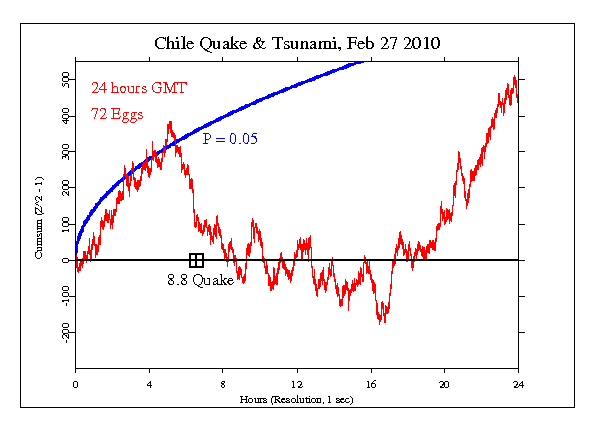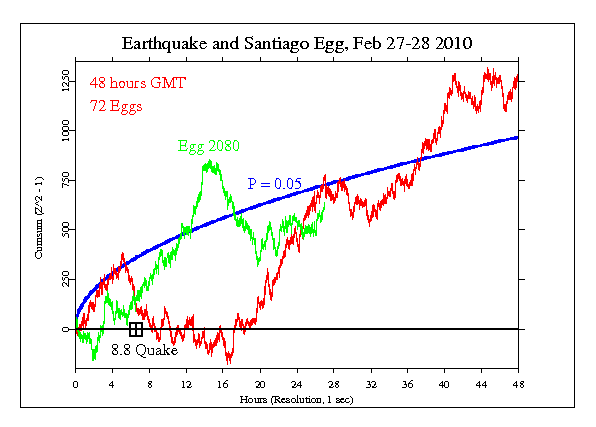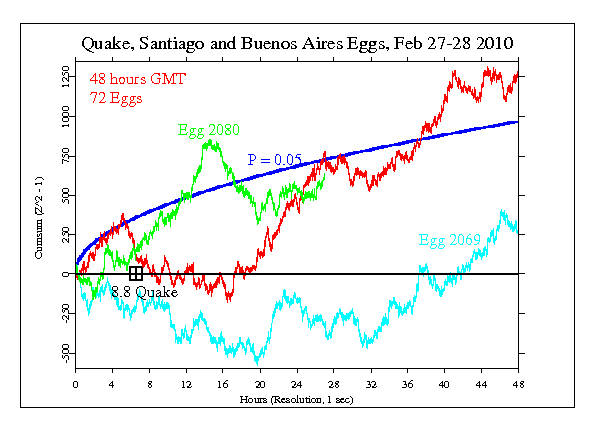|
A magnitude 8.8 earthquake struck off the coast of Chile
late yesterday evening (10:34 PST), killing scores of people
in Chile and causing Hawaii to brace for its biggest tsunami
since the Alaskan earthquake of 1964.
The tsunami alert went out hours before the first waves,
traveling at the speed of a passenger jetliner, were
expected to hit Hawaii at 11:19 this morning, local time.
Tourists and coastal residents are expected to wake up to
tsunami alarms and evacuation instructions several hours
earlier, tsunami authorities told the Associated Press.
The earthquake occurred along the junction of the Nazca and
South American tectonic plates, which are colliding off the
coast of Chile at a rate of 80 millimeters per year.
The coastline of Chile is one of the most active tectonic
zones in the world, with 13 temblors of magnitude 7.0 or
greater since 1973, the U.S. Geological Survey reports on
its earthquake-monitoring Website.
Magnitude 8.8
Date-Time
* Saturday, February 27, 2010 at 06:34:14 UTC
* Saturday, February 27, 2010 at 03:34:14 AM at epicenter
Region OFFSHORE MAULE, CHILE
115 km (70 miles) NNE of Concepcion, Chile
325 km (200 miles) SW of SANTIAGO, Chile
The GCP event was set for the full 24 hour day of the 27th,
which includes 6.5 hours before the main temblor. The result
is Chisquare 86852.814 on 86400 df, for p = 0.138 and Z =
1.089.

We have an Egg in Santiago, which was running at the
beginning of the earthquake. It continued to run for about 20 hours
following the major 8.8 temblor, then stopped recording
data. On March 1st, it was restored to operation, and the
stored data were sent to the GCP server and added to the
archive. The following graph shows the data from the
Santiago Egg, ID #2080, in green. The graph also shows not
only the 24 hours of the formal GCP event, but the next 24
hours as well. While we know that the signal to noise ratio
precludes strong interpretations, both the local Egg, and
the 48 hour graph suggest effects on the network consonant
with the unfolding picture of a devastating natural disaster.

The next closest egg to Santiago is in Buenos Aires, where
people also felt the quake. Egg # 2069 was running during
both days, and its data have a trajectory much like that of
the network as a whole. The next figure shows the two
individual eggs, Santiago and Buenos Aires against the
background of the whole network. Again, single events, and
data from single eggs can't be interpreted reliably, but we
show this picture as an interesting display of the variation
in responses.

It is important to keep in mind that we have only a tiny
statistical
effect, so that it is always hard to distinguish signal from
noise. This means that every "success" might be largely
driven by chance, and every "null" might include a real
signal overwhelmed by noise. In the long run, a real effect
can
be identified only by patiently accumulating replications of
similar analyses.
|